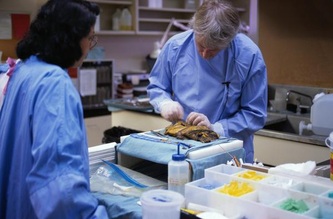Forensic pathology: it’s more than just autopsies on television. It’s a fascinating, complex, and crucial field within medicine and law. But what *is* it, really? What are the stakes? And why should you care? Prepare to have your perception of crime dramas irrevocably altered.
At its core, forensic pathology is the application of pathology to legal issues, primarily in cases involving sudden, unexpected, or violent death. A forensic pathologist, a medical doctor specializing in this discipline, serves as a medical detective, meticulously piecing together the circumstances surrounding a death to determine the cause and manner. It’s a field where scientific rigor meets legal scrutiny, demanding precision, objectivity, and a deep understanding of both medicine and the law.
Let’s dissect the key components:
1. Determining Cause of Death: The Prime Directive
The “cause of death” is the specific injury or disease that initiates the sequence of events leading directly to death. This might be a gunshot wound, a myocardial infarction (heart attack), or a cerebral hemorrhage (stroke). Pinpointing the cause is paramount. For example, was the gunshot wound immediately fatal, or did it lead to secondary complications? Did the heart attack result from pre-existing coronary artery disease, or was it induced by a toxin?
2. Unraveling the Manner of Death: The Broader Context
The “manner of death” classifies the death into one of five categories: natural, accidental, suicide, homicide, or undetermined. Deciding the manner requires considering the circumstances surrounding the death and any available medical history. A natural death is due solely to disease; an accident results from unintentional actions; suicide is self-inflicted; homicide is caused by another person; and “undetermined” is reserved for cases where insufficient information exists to confidently classify the death.
3. The Autopsy: An Intimate Examination
The autopsy, also known as a post-mortem examination, is the cornerstone of forensic pathology. It involves a systematic external and internal examination of the body to identify any abnormalities or injuries. During the autopsy, the pathologist meticulously documents findings, collects tissue samples for microscopic examination (histopathology), and may order toxicological analyses to detect the presence of drugs or poisons. It’s a meticulous process, demanding keen observational skills and an encyclopedic knowledge of anatomy and pathology. The pathologist acts as a narrator, translating the body’s silent story.
4. Beyond the Scalpel: Ancillary Investigations
Forensic pathology isn’t confined to the autopsy table. It encompasses a range of ancillary investigations. Toxicology screens, as mentioned, detect drugs and poisons. Histopathology reveals microscopic abnormalities indicative of disease or injury. Radiology, including X-rays and CT scans, can identify fractures or foreign objects. The forensic pathologist collaborates with other experts, such as forensic anthropologists (who analyze skeletal remains) and forensic odontologists (who analyze dental evidence), to gain a complete understanding of the circumstances surrounding the death.
5. Importance of Forensic Pathology: Justice, Public Health, and More
The implications of forensic pathology extend far beyond individual cases. Its importance reverberates throughout society, impacting justice, public health, and scientific advancement.
A. Upholding Justice: Speaking for the Silent
Forensic pathology plays a critical role in the criminal justice system. The pathologist’s findings can be crucial in determining guilt or innocence, providing crucial evidence in criminal trials. By establishing the cause and manner of death, the pathologist gives a voice to the deceased, ensuring that justice is served. It can help solve cold cases that may have gone without answers for years, providing closure to loved ones.
B. Safeguarding Public Health: Identifying Emerging Threats
Forensic pathologists contribute to public health by identifying emerging infectious diseases, environmental hazards, and other threats to the population. For example, unexpected clusters of deaths from a previously unknown disease can be identified through post-mortem examination, allowing public health officials to implement preventative measures. They act as sentinels, detecting subtle changes in mortality patterns that might otherwise go unnoticed, ensuring a healthier society.
C. Advancing Medical Knowledge: Learning from Death
Forensic pathology contributes to medical knowledge by providing insights into disease processes and the effects of trauma. Autopsies can reveal undiagnosed conditions or unexpected complications of treatment, leading to improvements in medical practice. It allows for constant reassessment of current medical practices and improvements for the future.
D. Preventing Future Deaths: Identifying Preventable Risks
By investigating accidental deaths, forensic pathologists can identify preventable risks and recommend safety measures to prevent similar deaths in the future. For instance, investigating deaths related to car accidents or workplace injuries can lead to improvements in vehicle design and workplace safety regulations. They are key in analyzing dangerous trends within the population.
Forensic pathology is more than just a job; it is a calling. It requires a blend of scientific acumen, meticulous attention to detail, and a deep commitment to justice. The next time you watch a crime drama, remember the real-life complexities and the profound impact of forensic pathology on our society. Perhaps this knowledge will make you view the genre with a newfound appreciation for the intricacies of death and the unwavering pursuit of truth.










Leave a Comment